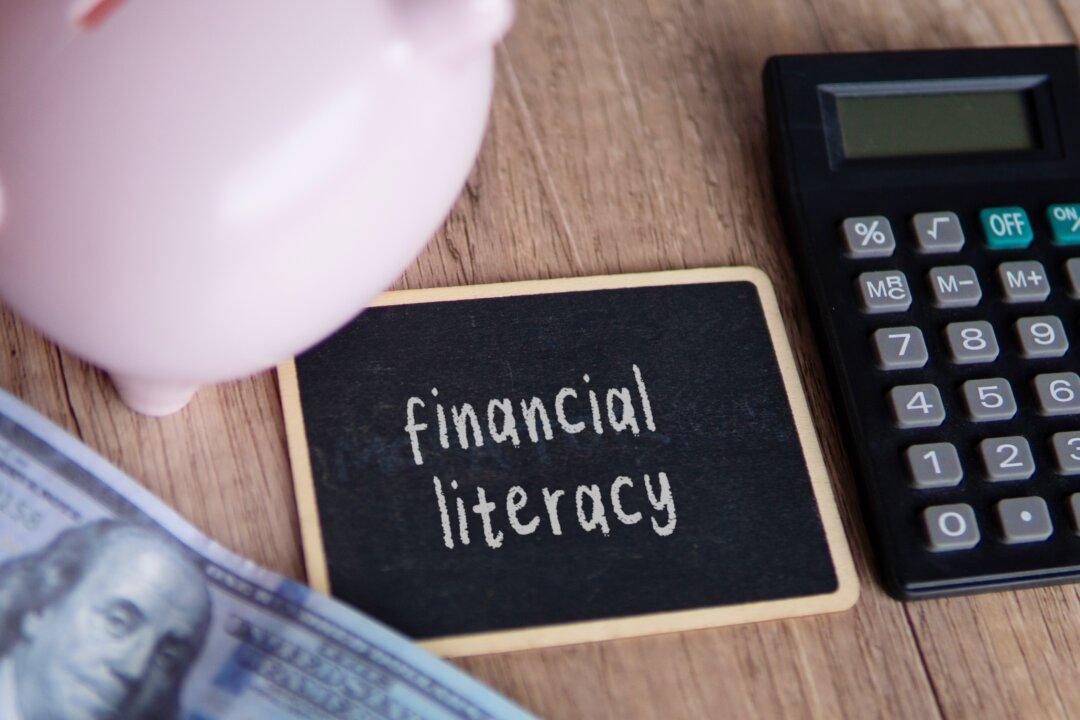If saving money was easy, everyone would be doing it. It isn’t easy. When you’re earning a low wage, it’s hard enough to make ends meet. You’ll always have to make rent and buy food, and there’s no shortage of other things to buy if only you had the money to buy them.
As your income rises, you can afford to be a little more generous with yourself. You might rent a bigger apartment or buy a newer car. You’ll eat out more often and treat yourself to a better phone. You’re earning more money but the month still feels longer than your pay.
High earners have the kind of expenses that make other people’s eyes water. The payments on a top-end car can cost more than many people’s rents. The cost of just running a big house can take a large chunk out of an average person’s salary, and high earners often have more than one house. Vacations suddenly have to be taken abroad, in five-star hotels, after flying business class at the very least.
Earning more doesn’t just open opportunities to save more. It also provides opportunities to spend more. What used to look like a luxury starts to look like a minimum, something you can’t live without. There’s always more to spend money on.
Your house can always be bigger. Or you can buy another one. Vacations can always be longer, more adventurous, and more luxurious. Clothes can always come with flashier labels.

People who don’t save believe that if they just had a little more money, they would save. They’re wrong. If they had a little more money, they’d spend more money. The ability to save isn’t directly connected to the amount of money you earn. It’s connected to your desire to save and your willingness to make the sacrifices needed to save.
Because saving requires sacrifices. It means being willing to put aside the fun that your money will buy now in favor of the greater security that your saved money will buy now, and the fun it will buy in the future.
Saving is a decision. It’s a choice you make today to plan ahead and prepare for tomorrow. It’s a smart choice that you don’t have to be rich to take.
How Much Should You Save?
So saving means making sacrifices. But how big a sacrifice should you make? How much should you restrict your life now in order to build security, or save for a big expense, or build your wealth for the future?Save too much, and you risk living like Scrooge: hoarding your wealth, never spending it, and never enjoying the benefits that money can bring. Save too little and you lose your security. You live from pay check to pay check. You’re never able to make a down payment on a house or build wealth that can work for you.
There’s no right answer for everyone. It’s relatively easy to cut fat from your budget when your budget includes first class plane seats. It’s much harder when you travel choices are the bus or foot. But there is a formula that you can use.
In general, financial experts recommend a 50/30/20 rule.

Half your income should go on necessities such as rent and food. Thirty percent should be discretionary. You should save 20 percent.
So someone earning $50,000 a year after taxes would spend no more than $25,000 a year on rent and food. They would spend a maximum of $15,000 on shopping and entertainment. And they would save the remaining $10,000.
How hard you’ll find it to keep to that formula will, of course, depend on how much you earn. According to the USDA, the average American spent 9.5 percent of their disposable personal income on food in 2019 but the share varies considerably by income quintile. People in the lowest income quintile spend as much as 36 percent of their income, or $4,400 a year, on food. People in the highest quintile spend almost four times as much at $13,987, but that represents just eight percent of their disposable income.
The definition of “necessities” and “discretionary” spending can very too. A car is a necessity for many, but not for everyone. Saving can take many forms as well. If your employer is paying into a 401(k) plan for you, then you’ll already be contributing towards that 20 percent savings rate, even if you can’t feel it. If your employer has a matching contribution plan then each additional dollar you put into your retirement pot will bring more of your employer’s money.
Set a Goal
The problem with saving a percentage of your income is that your income can change. Sales people, for example, often work on a bonus structure. It’s too easy for them to save a share of their basic salary but treat the rest of their income as extras that they can enjoy. Those extras could well make up the bulk of their income.But bonuses are also unreliable. Even the best sales people can go through dry patches, and average sales people can sometimes land a big deal that they never repeat. That unreliable income can make for unreliable savings plans.
An alternative approach is to set a financial goal. That’s easier to do if you know exactly what you’re going to use that money for. If you plan to save $50,000 for a house deposit, for example, you could calculate that putting aside $500 a month would take you 100 months, or just over eight years. Tighten your belt and double your saving rate and you could be in your own home in a little more than four years.
The vision of your target should help you to maintain your discipline.
But maintaining a savings discipline over the long term is always difficult, which is why financial experts often talk about short-term, mid-term, and long-term savings goals.

Short-Term Savings Goals
The aim of a short-term saving goal is to show that saving works. It’s a way to build confidence and motivation for longer-term savings. It also shows you that saving can be easy.As we’ll see in the next section, tracking your budget is important, and it’s a good place to begin when you’re setting a short-term financial goal. When you can see that you’re spending four bucks each workday on a Frappuccino at the local Starbucks, then you can see that making do with the coffee machine in the office kitchen will save you $20 a week. That’s $80 a month in your pocket at the end of the month just by swapping expensive coffee for free coffee.
Add in the restaurant food you order three times a week instead of cooking up a simple pasta dish at home or dessert in the restaurant that you could easily skip. You could quickly find yourself with an extra $250 each month. That’s an instant pay rise for very little effort.
When you see that extra money, you’ll quickly see that saving really does have some important, positive consequences. You’ll also see that if you keep going, you can save even more and make a real difference to your lifestyle.
Most importantly, it won’t be long before you’ve built an emergency fund of a few thousand dollars. If you can use your short-term savings goals to save enough money to last a few months without pay, you’ll have a valuable degree of security. You won’t have to worry too much if you suddenly lose your job or find that you’re unable to work. Nor will you have to beg from friends or turn to family.
Mid-Term Savings Goals
You should be able to see the result of a short-term savings goal within a few weeks. By the end of the month, you’ll find that you have more money in your pocket than you expected. After a few months, you’ll feel the confidence that comes with greater security.At that point, you can start thinking about your mid-term goals.
These will vary from person to person. They’ll depend on your status and the financial position from which you start. Your medium-term goal might be to save enough to clear your student debts or make a down payment on a house. Or perhaps you’re saving enough to set up a business.
At this point, you need to do more than simply not spend more than you earn. You need to start putting your money to work. Those savings might be sitting unused for several years. That’s time that inflation will be eating into their value. You will need to protect them.
Later in this guide, we’ll talk you through the range of savings vehicles that you can use to store your savings but this is the time to start looking into them.
One of the biggest issues surrounding personal finance is that when you don’t have spare cash, knowing what to do with your savings feels irrelevant. It’s information that other people need—people richer than you. But when you do have savings, it’s too late. Inflation is already reducing their value and the opportunity cost of not investing them is reducing revenues.
It’s while you’re saving for the medium term that you can start to square that circle. As your savings build, start investigating different savings accounts and different investment vehicles. This is also the time to understand that saving vehicles have different maturation periods. The longer that you’re willing to lock up your money, the more interest you can expect to receive. But if you’re saving for a mid-term goal you won’t be able to benefit from all of the advantages available to long-term savings.
You won’t be able to enjoy the tax benefits, for example, that come from contributing to a 401(k) plan or an IRA. You also won’t be able to enjoy all of the returns that come from holding a bond all the way to maturity.
But you will be able to lock up your funds for a limited time, and enjoy some of the benefits.
Estimate how long it will take you to reach your mid-term goal—whether that’s a deposit for a house, or a fixed sum to open a store. As you put money aside each month, remember to invest that money for a period no longer than the date of that goal. You should find that your savings grow faster, and you reach your goal sooner.

Long-Term Savings Goals
When financial advisors talk about long-term savings goals, they’re usually talking about retirement. They’re referring to the day you close your last folder, hang up your keyboard, and swap days in front of a screen for time with the family, on vacation, and enjoying your life.That’s hard to think about when you’re just starting your career.
Retirement will still be decades away, and who knows what will happen between then and now? Do you really need lock up your money for 30 or more years? Maybe you won’t need it then. Maybe over the next few years, you’ll launch a successful business or land a high-paying job or win the lottery. If you strike it rich between then and now, you’ll have locked away money you need today to benefit a time when you don’t need it.
We all hope that at some point between our first job and our last day at work we’ll hit the jackpot. Google will buy the company for a truckload of stocks. Royalties will pour in from patent licenses. Salary and bonuses will hit seven figures … and keep going.
But that’s not something that anyone can rely on. And planning your finances in the hope that “something will come up” isn’t just a poor decision. It’s also a very expensive one.
The biggest benefit of a long-term savings goal is the effect of compound interest. The money your money makes, makes money too. The longer you leave the money locked up, the more compound interest it earns, and the more work it does for you.
Start saving $500 a month when you’re 25 years old, and by the time you’re ready to retire at 65, you’ll have saved $464,687 at an interest rate of just three percent. The $240,000 of income that you’ll have saved will have earned an additional $224,687, an average $5,617 a year.
Start ten years later, though, at 35 instead of 25, and by the time you’re 65, you’ll only have $292,596. Your $180,000 will have earned $112,596, an average of just $3,753 a year.
The earlier you start saving for those long-term goals, the more your money will work for you. Not only will you have bigger nest-egg at the end, you’ll also have needed to save less to get it!
Even if you have a plan to get rich before retire, you should still be putting away money to meet your long-term goals. You should start making those savings as early as possible.







Friends Read Free